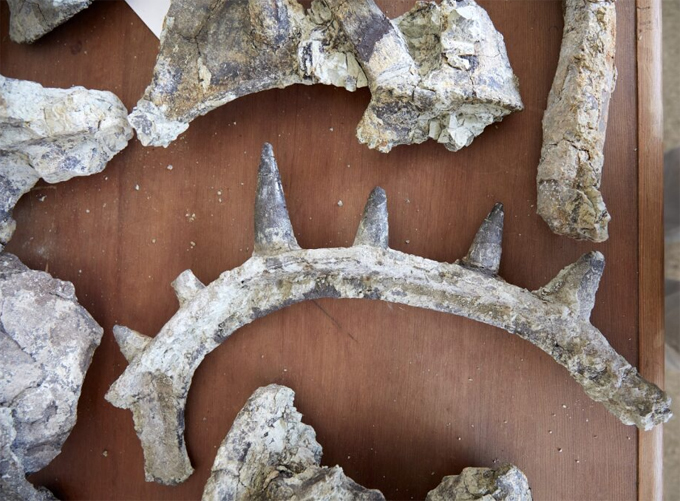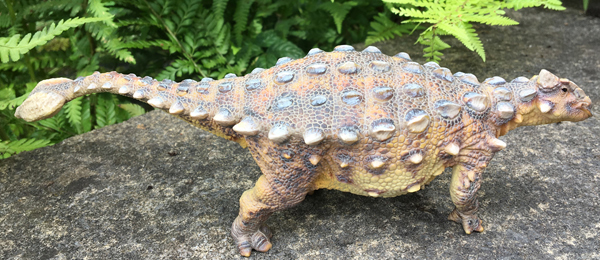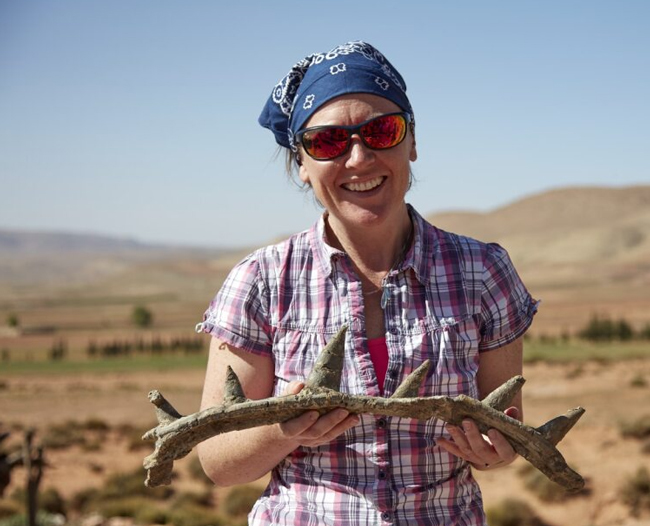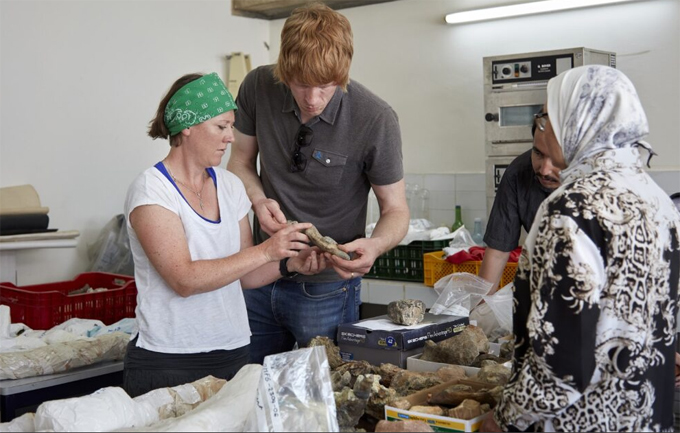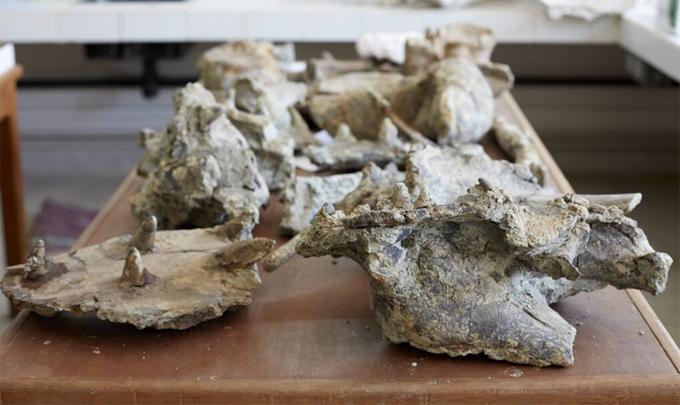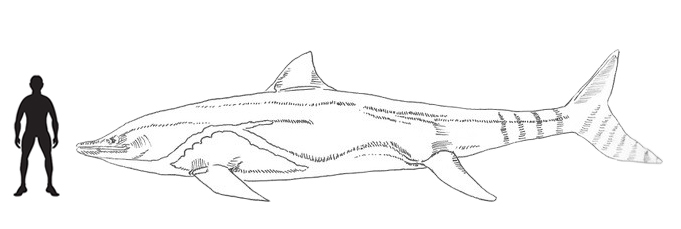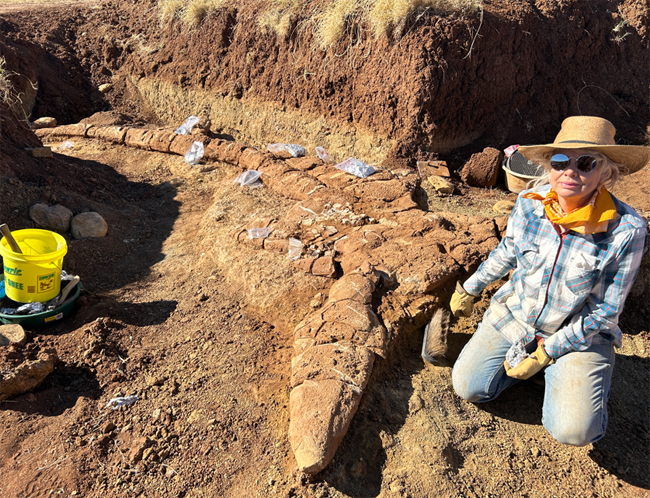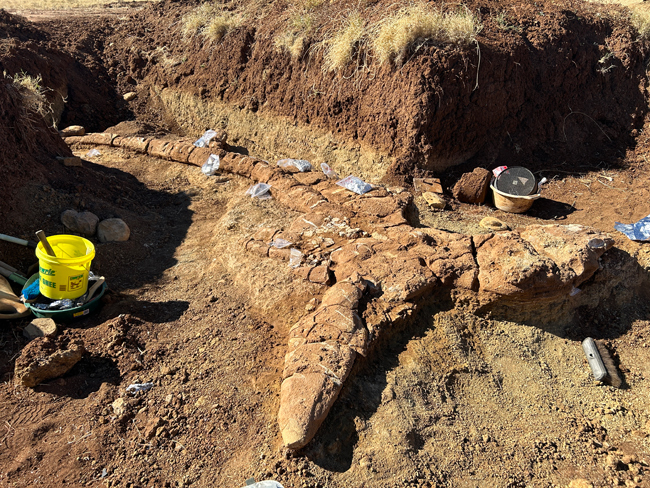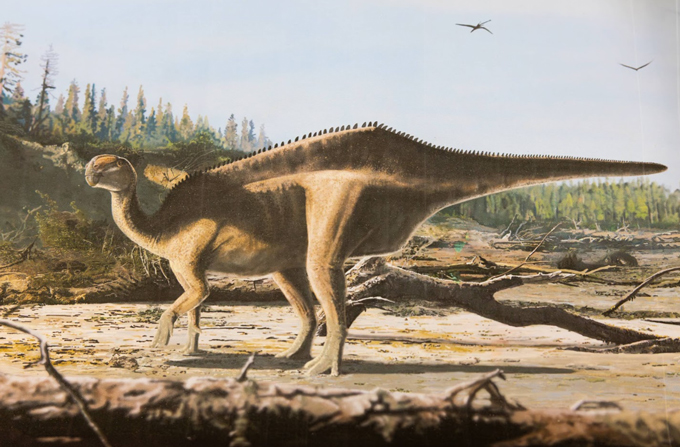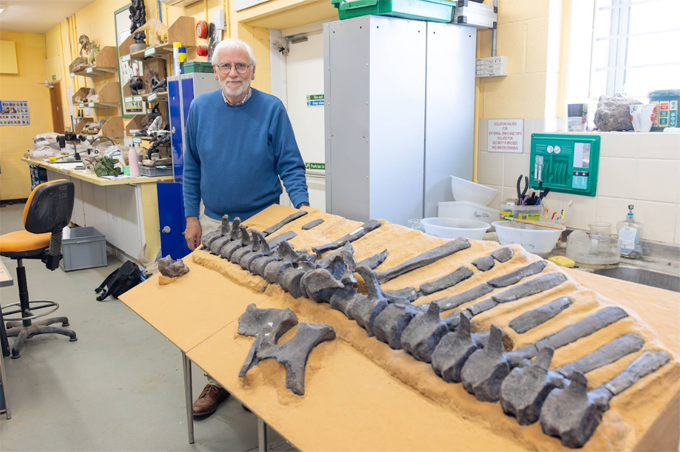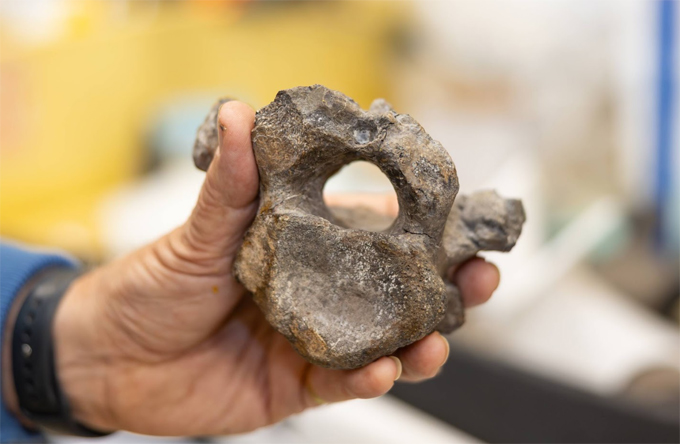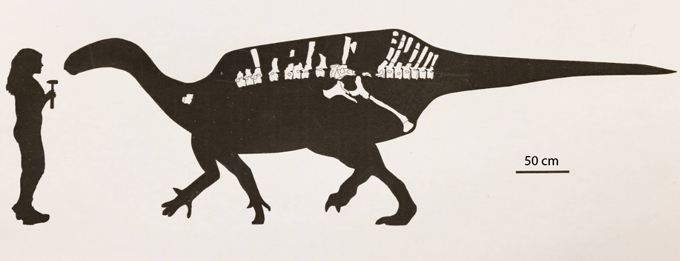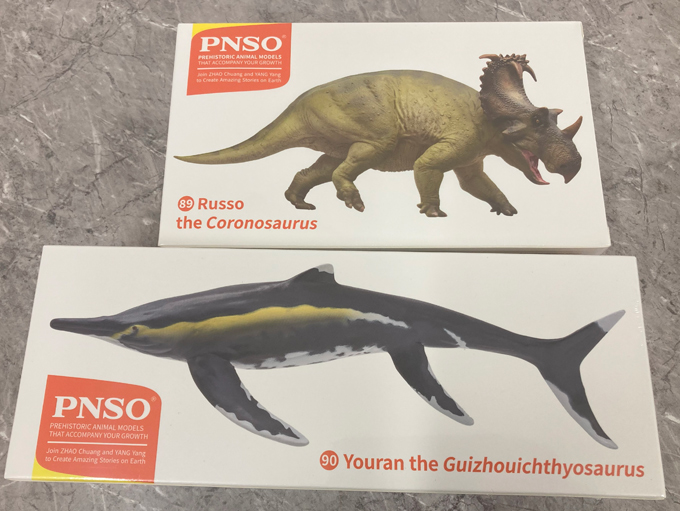New Prehistoric Times Magazine (Issue 154) Reviewed
Meteorological summer might be ending but there is just time to review the latest edition of the quarterly magazine “Prehistoric Times”. It is issue 154 and the front cover artwork features a pair of Confuciusornis birds. The illustration was created by Jan Sovak, who sadly passed away earlier this year. Renowned palaeontologist Phil Currie has penned a fitting tribute to the Czech-born artist and book illustrator. The article features several examples of Jan’s beautiful palaeoart including his illustration of Murusraptor barrosaensis, which accompanied the media release about that dinosaur’s discovery. The Camarasaurus artwork on the back cover of this issue of “Prehistoric Times” magazine was also created by Jan Sovak.
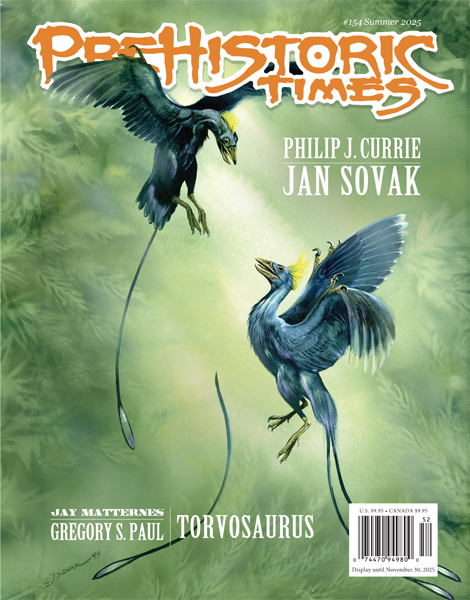
The front cover of issue 154 features the artwork of Jan Sovak who sadly passed away in April. Picture credit: Mike Fredericks
Picture credit: Mike Fredericks
Torvosaurus and the Bizarre Peltephilus
Regular contributor Phil Hore guides us through the two featured prehistoric animals. The article on Torvosaurus provides an insight to the currently recognised species but also hints at the possibility that the Torvosaurus taxon could have been more geographically widespread than previously thought. The author speculates on whether this super-sized theropod originated in Europe before spreading further into Laramidia and reaching Gondwana via land bridges.
There are some super Torvosaurus illustrations. Wade Carmen chose to illustrate the skull, whereas M. Elliot Massion shows the carnivore in a resting pose. Confrontations with Stegosaurus are also popular, thanks to Tony Pichler and Gus Pritchard for their contributions. John Trotter chose to depict Torvosaurus trying to avoid a flood, whereas the sculpture by Jamie Matinez portrays a much more dynamic animal.
The second featured prehistoric animal is the bizarre, horned armadillo Peltephilus. Phil Hore acknowledges the contribution made by brothers Carlos and Florentino Ameghino. My thanks to Chuck Egnaczak, Pedro Salas and James Dzikowski for their illustrations. A shout out to Andreas Forrer for creating a Peltephilus diorama.
Tracy L. Ford discusses another armoured prehistoric animal as he focuses on the prominent shoulder spines of stegosaurs. This is part of a four-part series examining stegosaur integument. In contrast, J. R. Lavas continues his exploration of proboscideans documenting the artwork of Zdeněk Burian. Allen Debus returns to discuss the impact of palaeoart on speculative evolution and editor Mike Fredericks interviews model maker Hedy Ho from Beijing. Regular contributor Randy Knol looks at some of the latest figures released by CollectA, Schleich and Eofauna. Gregory S. Paul opines about the palaeoart of Jay Matternes and his article includes some fabulous landscapes and dioramas.
Book Reviews and Everything Dinosaur Evolution
The Mesozoic media section covers a wide range of titles. For example, the accompaniment to the recent BBC “Walking with Dinosaurs” reboot is reviewed. In addition, “King Tyrant: A Natural History of Tyrannosaurus rex” is also discussed. I have had the pleasure of reading this comprehensive examination of T. rex and author Dr Mark Witton has excelled himself. It really is an amazing book, and it is highly recommended.
The “What’s New” section continues the Tyrannosaurus rex theme with an exclusive look at the soon to be released Everything Dinosaur Evolution T. rex. It is an honour to have our first prehistoric animal featured in search an illustrious magazine.
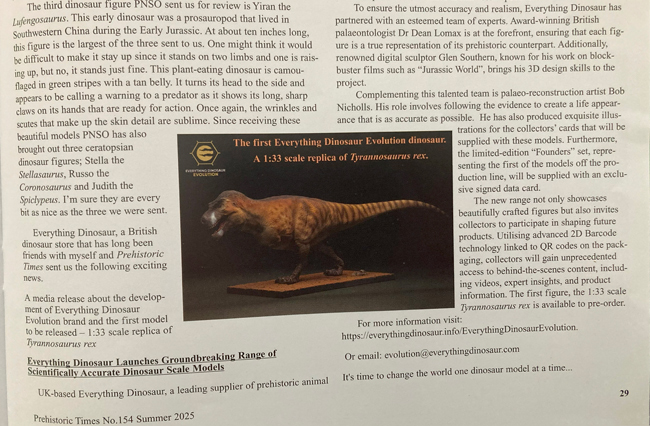
The first figure in the new Everything Dinosaur Evolution range, a 1:33 scale replica of T. rex is featured in issue 154 of “Prehistoric Times” magazine. Picture credit: Everything Dinosaur.
Picture credit: Everything Dinosaur
To view the first figure in this exciting new range of prehistoric animal models: Everything Dinosaur Evolution Models.
Fossils versus Fiction
James Russo provides a synopsis of the film “The Land that Time Forgot”, which is based on the book of the same title written by Edgar Rice Burroughs (1918). The film premiered in late 1974 and it is fondly remembered by many dinosaur model collectors. Despite several inaccuracies, Russo’s article is an enjoyable read and a welcome trip down memory lane. Furthermore, it was pleasing to see Jeri Hurt’s artwork depicting a scene from another iconic dinosaur movie “Valley of the Gwangi”. Congratulations also to Charles Ferguson for the excellent Baryonyx illustration and for Tony Pichler’s herd of Bajadasaurus.
Russell J Hawley depicts the head of Torvosaurus tanneri and Sean Kotz continues the Torvosaurus motif by outlining how he painted a resin model in 1/20th scale. In addition, Robert Telleria examines the Sega “Dinosaur Kings” model range and there is a comprehensive “Paleonews” section too.
“Prehistoric Times” magazine issue 154 is crammed full of interesting articles, illustrations and features and it was wonderful to see our Everything Dinosaur Evolution T. rex model immortalised in print in this edition.
To visit the “Prehistoric Times” magazine website and to subscribe: “Prehistoric Times” Magazine.





